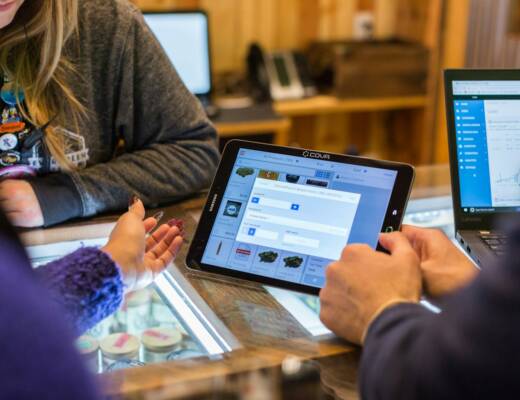Launching a mobile app is difficult, especially in the iOS environment. It requires a lot of analysis, risk evaluation, road mapping, and user knowledge. That’s why a discovery phase is so important in this journey. It is the initial step of app development and ensures clear goal setting, market and trend research, and learning about the future consumer. The discovery phase is one of the most significant stages on launching a startup on the iOS platform and ensuring it becomes successful.
Understanding the Importance of the Discovery Phase in App Development
The discovery phase is crucial to starting the project and involves researching the problem, finding ways to solve it, and gathering data to map the next steps. Discovery methods like competitor analysis, user persona creation, and selecting the most important features for MVP help define goals, reduce risks, and create a foundation for subsequent development stages.
Essential Tools for Effective Market Research
Market research comprises competitors, market trends, and user behavior analysis. This information allows for identifying a gap in the market or a customer’s need not covered by existing solutions and determining product-market fit.
Competitor Analysis Solutions
Competitor analysis includes researching the competitor’s product, strategies, and marketing tactics to identify their weak and strong sides and find hidden opportunities for the development of your product. It allows you to determine:
- Competitors’ strengths and weaknesses.
- Industry trends and tendencies.
- Applicable benchmarks.
- State of the relevant market.
Market Trend and User Behaviour Insights
Market trends show how the market changes in response to user behavior and customer needs. Based on this data, you can try to predict the solution that will meet those needs and be the answer to developing industry trends.
There are many tools on the market, both paid and free, to help you with this task. From Google Trends and Statista to platforms like Similar Web and even AI and ML models for data gathering and processing, such findings will allow you to better understand the audience preferences and current tendencies across the industry.
User Persona Creation: Tools and Techniques
However ideal the product is, without customers to buy it, the whole venture will fail. That’s why it’s crucial to get to know your audience, and one method for this is creating a User Persona. A user persona is a fictional character that represents most of your client’s features—their gender, age, location, preferences, etc.
Tools for Collecting User Data and Insights
There are a lot of tools and methods for creating a User Persona. However, the most important thing is gathering all the information you can get through quantitative and qualitative research techniques:
- Analytic tools like Google Analytics or Apple App Analytics contain information about app usage trends, retention rates, etc.
- Surveys through Google Forms or any other similar tool allow for collecting large-scale feedback on user behavior and surveying an unlimited number of people,
- Interviews present a qualitative method and suggest a more in-depth approach to user’s needs, motivation, and frustrations.
Techniques for Building Detailed User Personas
Once you’ve collected, validated, and categorized the data, it’s time to detailed user personas, including all the main points of interest:
- Key attributes like demographic details (age, gender, work field).
- Goals that users want to achieve using your product include improving their health or productivity.
- Needs are similar to goals and represent the client’s urges or wishes that your app can meet.
- Pain points represent challenges that users face while using a similar product or trying to achieve a similar goal.
Prioritizing Features: Tools to Define MVP
Before creating a full-fledged product, it’s always best to develop an MVP (Minimal Viable Product) that contains the basic core features and test it on users. To do this, you need to distinguish the most important functions.
Feature Prioritisation Frameworks
Some certain approaches and frameworks can help with this:
- A prioritization matrix measures the value and effort of each feature.
- Kano Model based on the customer-satisfaction goal.
- RICE Framework measures reach, impact, confidence, effort, etc.
Roadmapping Techniques for MVP Planning
A plan should guide each development process. In-app building is called road mapping. An MVP roadmap will provide a high-level view of the whole process from the idea to launch (and sometimes marketing) and contain the main milestones, terms, and goals. Certain steps and methods for road mapping include determining values, aligning them with business goals, using different metrics, and embracing feedback and changes along the way. They help distribute development and testing phases, improving predictability and control during the process.
Budgeting and Timeline Estimation Tools for App Development
Correctly estimating the timeline and budget is critical during the discovery phase, especially for smaller companies or startups.
Cost Estimation Approaches
The app-building process is divided into stages: design, development, testing, and marketing. Each stage requires a separate budget and time constraints depending on its complexity, the number of people involved, and the expected outcome.
There are various cost estimation approaches, including:
- parametric estimating using historical data;
- analogous estimating combining historical data and expert judgment;
- top-down and bottom-up techniques,
You first either determine the cost of the whole project and break it down, or vice versa—identify the price of elements first and then combine them into the total cost, etc.
Project Timelines
Time constraints are also important for the team members, stakeholders, and users. Approaches to setting project timelines ensure the smooth transition of the project between teams and phases:
- Gantt charts can help visualize project timelines, tasks, dependencies, and deadlines.
- The critical Path Method, or CPM, helps identify the most necessary tasks for project completion.
- Flowcharts are valuable in complex projects since they demonstrate the sequence of steps and their connection.
- Kanban is mostly used for Agile teams with shorter development cycles, more flexible task divisions, etc.
Sometimes, it’s best to combine tools to get a full overview and use them for different purposes—a Gantt Chart for stakeholders and a Kanban for internal teams, for example.
Key Takeaways
The product development process consists of many stages, with the Discovery Stage being one of the most critical ones. The product idea is shaped and researched during the discovery phase, trends and competitors are analyzed, and expected objectives are aligned with the market reality. Learning more about the target audience and creating a portrait of the future user is crucial to ensuring the product will meet the existing audience’s needs. It is also a time when the features should be prioritized and combined into a first MVP to receive real customer feedback. Budgeting and timeline estimation are done using the created project roadmap to ensure the product will hit all the milestones in a timely manner with resources to spare.






